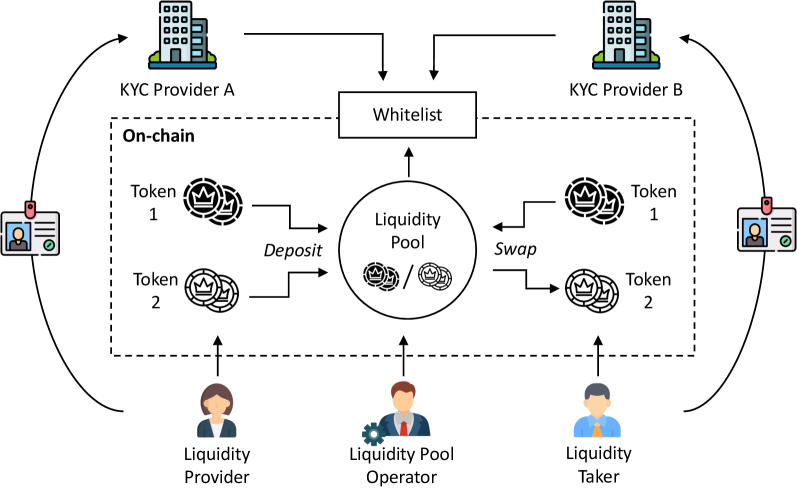Why is privacy no longer optional in the Web3 era?
When data breaches reveal the real problems

Earlier this week, it was reported that sensitive customer information from several major U.S. banks, including JPMorgan Chase, Citigroup, and Morgan Stanley, was at risk. The cyberattack targeted mortgage technology provider SitusAMC. The leaked content reportedly included accounting documents, legal documents, and, in some cases, customer financial information. While the full scope of the incident is still under investigation, it exposes a deeper problem: the security of modern financial infrastructure depends on the weakest link in the service providers it connects to.
However, what is more worrying than data breaches themselves is the prevalence of this pattern. Systems built for convenience, integration, and automation are constantly expanding, while privacy protections remain inconsistent and often optional. As a result, data flows at an unprecedented speed, yet there is a lack of sufficiently robust safeguards to protect it.
A constant reminder: Privacy is a hygiene habit, not a function.
Shortly after the news broke, Ethereum co-founder Vitalik Buterin publicly commented:
"Privacy is not a function, but a hygiene habit."
This is more than just a reaction—it reflects a cultural shift taking place in the Web3 space. For years, privacy has been seen as a switch or product setting. Users can choose to enable it, install tools, or manually modify wallet behavior. But this model assumes privacy should be an enhancement, not a fundamental feature. Buterin's framework overturns this expectation: privacy should function silently, automatically, and by default.
His comments resonated because they reflected an emerging truth: we are moving towards a world where digital ownership has real economic weight. In this world, privacy can no longer be an optional feature, but must become a structural element.
Ethereum founder Vitalik Buterin said after the bank data breach: "Privacy is hygiene."
Privacy protection in Web3: What problem does it aim to solve?
Blockchain was designed with transparency in mind. Every transaction, every balance, and every flow of funds is visible and verifiable. This makes decentralized systems predictable and trustworthy. However, over time, this transparency can also expose user behavior, address relationships, and financial identities.
The privacy track in Web3 exists precisely to resolve this contradiction. It does not completely eliminate transparency, but rather aims to achieve… selective visibility —users, protocols, or organizations can disclose only the necessary information when required.
In short, privacy infrastructure aims to answer the following questions:
- How can a transaction be verified without exposing the counterparty?
- How do smart contracts manipulate encrypted data?
- How can users verify compliance without disclosing confidential information?
- How can organizations use blockchain without exposing their own operating models?
As regulatory expectations evolve and adoption accelerates, privacy is transforming from a niche feature into an essential component of scalable digital infrastructure.
Sub-sectors within the privacy ecosystem
Although privacy spaces are often categorized into one type, they are actually more diverse than they appear. Today, they can be broadly divided into four developing levels:
Private transactions
These protocols allow users to send assets without exposing their transaction history or wallet associations. Unlike earlier mixers, the new approach introduces a more compliant proof system, rather than complete anonymity.
A striking example here is Privacy Pools. Instead of hiding funds in an indistinguishable pool, it allows users to cryptographically prove that their assets are not from illicit sources, thus protecting privacy while maintaining auditability.
Confidential computing
This technology plays a more fundamental role here. Such protocols do not simply conceal the destination of transactions, but rather support cryptographic computation—smart contracts can process private data without revealing it to validators.
One leading project in this category is Existence, which focuses on fully homomorphic encryption (FHE). Its goal is simple yet profound: to make the user experience of private smart contracts as smooth as that of public smart contracts while maintaining compatibility with existing blockchain infrastructure.
Privacy protection identity
As more users shift from anonymous wallets to on-chain identities and credentials, privacy becomes paramount. Selective disclosure frameworks allow users to prove their eligibility—such as age, nationality, or asset ownership—without revealing unnecessary personal information.
This category intersects with the decentralized identity (DID) framework and is likely to become increasingly important for compliance-driven applications such as tokenized assets, institutional DeFi, and on-chain credit systems.
Regulated privacy infrastructure
Finally, a new category of systems is emerging—systems designed from the outset to conform to the legal framework. These systems no longer assume that privacy and compliance are in conflict, but rather attempt to reconcile them. Vitalik's philosophy is most fully embodied here: privacy is a fundamental principle, and transparency is only provided when necessary.

Privacy leaders define the next phase
As privacy technology stacks mature, some projects have evolved from the experimental stage into reference points for the development of on-chain privacy.
One of the most prominent examples today is Privacy Pools, built on Ethereum. As an upgrade to earlier privacy models, it introduces a new mechanism that allows users to protect transaction privacy while proving compliance when necessary. Instead of relying on a single, indiscriminate set of anonymity, it uses cryptographic proofs to categorize transaction origins, enabling users to demonstrate they do not belong to prohibited groups. This design lies between complete anonymity and complete transparency, aiming not to circumvent visibility but to align privacy with regulatory expectations. For this reason, Privacy Pools are frequently mentioned in discussions about "regulated privacy"—a concept whose importance is increasingly evident as institutions move into the Web3 era.
Another important project in this field is Zama, which focuses on fully homomorphic encryption (FHE). While privacy pools focus on privacy protection at the transaction level, Zama takes this concept to a deeper level—the computational level. With FHE, smart contracts can execute logic directly on encrypted data without decryption, meaning verifiers can verify the correctness of the execution without accessing the underlying information. This is a significant departure from traditional blockchain models, where visibility and verification are inseparable. Zama's work has garnered widespread attention because it provides a pathway to private lending, private voting, crypto-financial instruments, and enterprise applications with extremely high confidentiality requirements. The project is still under active development, and its technology is being tested by developers exploring building privacy-preserving applications on existing blockchains.

In addition to the two approaches mentioned above, there are emerging identity-centric protocols that build zero-knowledge-based verification frameworks that allow users to selectively disclose information. Users can prove they meet eligibility, residency, or asset thresholds without publishing identity attributes, and without exposing unnecessary metadata. These tools are still in their early stages, but they mark an important direction: privacy in Web3 is no longer limited to transaction protection, but extends to how users... exist on-chain.
While no clear winner has emerged in the privacy ecosystem, these projects showcase the field's trajectory. Privacy is shifting from isolated tools to embedded architectures, from niche applications to infrastructure integration. Perhaps most importantly, it's moving from a defensive stance (protecting users from information leaks) to a constructive one, giving rise to many new applications that would be impossible without cryptographic computation and selective disclosure.
As more builders, institutions, and regulators engage in this field, the focus of the discussion is gradually shifting. Privacy is no longer seen as an obstacle to compliance or adoption, but rather as a fundamental component necessary for the responsible expansion of digital ownership.
The Future of Privacy-Based Infrastructure
What we are seeing now is not a privacy "toolkit," but the prototype of a privacy-native architecture. The narrative is gradually shifting. Privacy is no longer about hiding, but about enabling secure participation. It is not a stopgap measure or a niche feature, but a necessary foundation for building a sound digital economy.
Perhaps the biggest lesson we can learn from this bank data breach and Vitalik's comments is that privacy breaches rarely come from the technology users fear, but rather from the systems users trust.
If Web3 is to deliver on its promises of ownership, autonomy, and open systems, then privacy must evolve from a preference into a standard.
Because the future of digital finance depends on more than just transparency—
However, a balance must be struck between what must be made public and what should be kept confidential.
- 核心观点:隐私应成为Web3基础设施的默认标准。
- 关键要素:
- 银行数据泄露暴露第三方服务安全漏洞。
- Buterin提出隐私是基础卫生而非功能。
- 隐私技术实现选择性披露与合规平衡。
- 市场影响:推动隐私基础设施成为行业刚需。
- 时效性标注:长期影响



